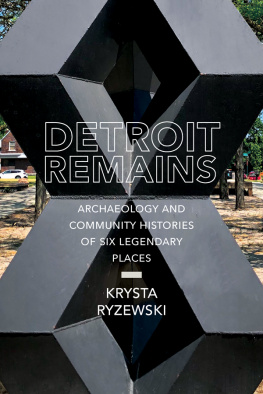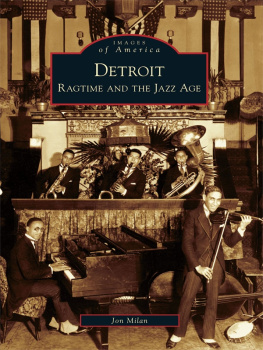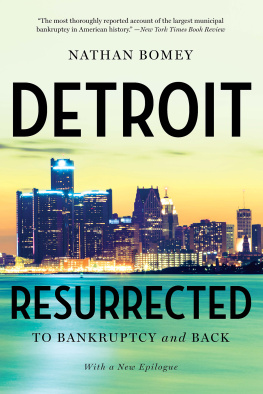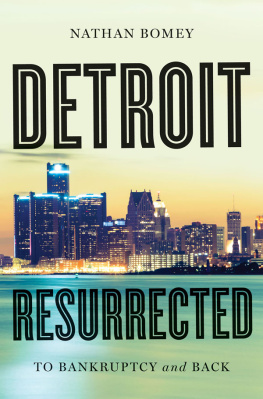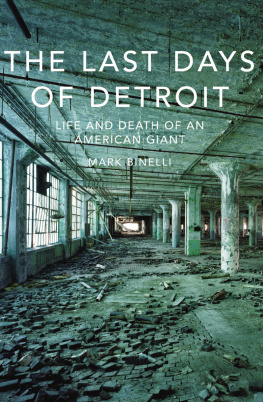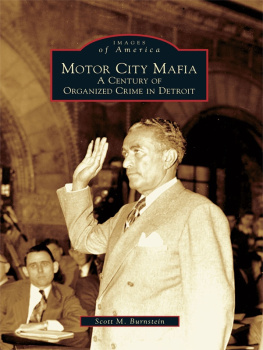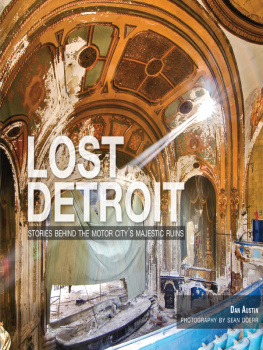Krysta Ryzewski - Detroit Remains: Archaeology and Community Histories of Six Legendary Places
Here you can read online Krysta Ryzewski - Detroit Remains: Archaeology and Community Histories of Six Legendary Places full text of the book (entire story) in english for free. Download pdf and epub, get meaning, cover and reviews about this ebook. City: Tuscaloosa, year: 2021, publisher: University Alabama Press, genre: History. Description of the work, (preface) as well as reviews are available. Best literature library LitArk.com created for fans of good reading and offers a wide selection of genres:
Romance novel
Science fiction
Adventure
Detective
Science
History
Home and family
Prose
Art
Politics
Computer
Non-fiction
Religion
Business
Children
Humor
Choose a favorite category and find really read worthwhile books. Enjoy immersion in the world of imagination, feel the emotions of the characters or learn something new for yourself, make an fascinating discovery.
- Book:Detroit Remains: Archaeology and Community Histories of Six Legendary Places
- Author:
- Publisher:University Alabama Press
- Genre:
- Year:2021
- City:Tuscaloosa
- Rating:3 / 5
- Favourites:Add to favourites
- Your mark:
Detroit Remains: Archaeology and Community Histories of Six Legendary Places: summary, description and annotation
We offer to read an annotation, description, summary or preface (depends on what the author of the book "Detroit Remains: Archaeology and Community Histories of Six Legendary Places" wrote himself). If you haven't found the necessary information about the book — write in the comments, we will try to find it.
The city of Detroit has endured periods of unprecedented industrial growth, decline, and revitalization between the late nineteenth century and the present. In Detroit Remains: Archaeology and Community Histories of Six Legendary Places, Krysta Ryzewski presents six archaeological case studies of legendary Detroit institutionsLittle Harry speakeasy, the Ransom Gillis house, the Blue Bird Inn, Gordon Park, the Grande Ballroom, and the Halleck Street log cabinthat trace the contours of the citys underrepresented communities and their relationship to local currents of capitalism and social justice. Through a combination of rigorous historical archaeological research and narrative storytelling, Ryzewski deftly contextualizes the cases within the citys current struggles, including recovery from bankruptcy, and future-oriented recovery efforts.
This is the first historical archaeology book focused on Detroit and one of the few to foreground the archaeology of the Great Migration era (ca. 19151970). The archaeological scholarship is rooted in collaborative, community-involved, and public-facing initiatives. The case studies examine how power is and has been exercised in Detroits communities over the past century: how it was stripped from the citys twentieth- and twenty-first-century residents, but also how they acquired alternative sources of agency by establishing creative and illicit economies, most of which still operated within the citys capitalist framework.
Throughout this book, connections run deep between archaeology, heritage, politics, historic preservation, and storytelling. Detroit Remains demonstrates how the citys past, present, and future lie not in ruins but in the tangible archaeological traces of the everyday lives of Detroiters and their legacies.
Krysta Ryzewski: author's other books
Who wrote Detroit Remains: Archaeology and Community Histories of Six Legendary Places? Find out the surname, the name of the author of the book and a list of all author's works by series.

